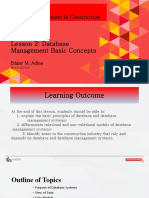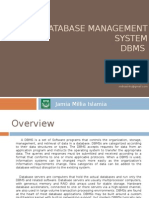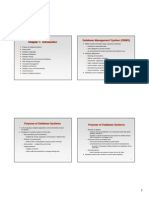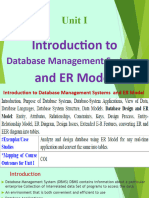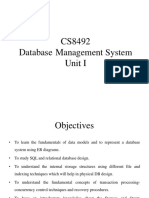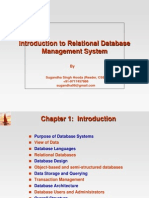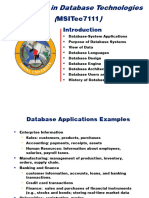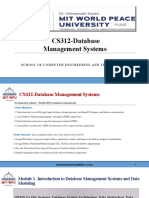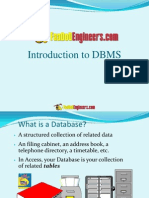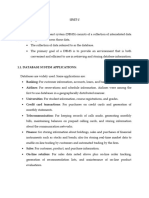0% found this document useful (0 votes)
16 views22 pagesDatabase Systems
The document provides an overview of database systems, including their purpose, structure, and key components such as data models, data definition and manipulation languages, and transaction management. It highlights the advantages of database systems over traditional file systems, addressing issues like data redundancy, integrity, and security. Additionally, it discusses the roles of database administrators and users, as well as the architecture of database applications.
Uploaded by
anishdesai072Copyright
© © All Rights Reserved
We take content rights seriously. If you suspect this is your content, claim it here.
Available Formats
Download as PDF, TXT or read online on Scribd
0% found this document useful (0 votes)
16 views22 pagesDatabase Systems
The document provides an overview of database systems, including their purpose, structure, and key components such as data models, data definition and manipulation languages, and transaction management. It highlights the advantages of database systems over traditional file systems, addressing issues like data redundancy, integrity, and security. Additionally, it discusses the roles of database administrators and users, as well as the architecture of database applications.
Uploaded by
anishdesai072Copyright
© © All Rights Reserved
We take content rights seriously. If you suspect this is your content, claim it here.
Available Formats
Download as PDF, TXT or read online on Scribd
/ 22




